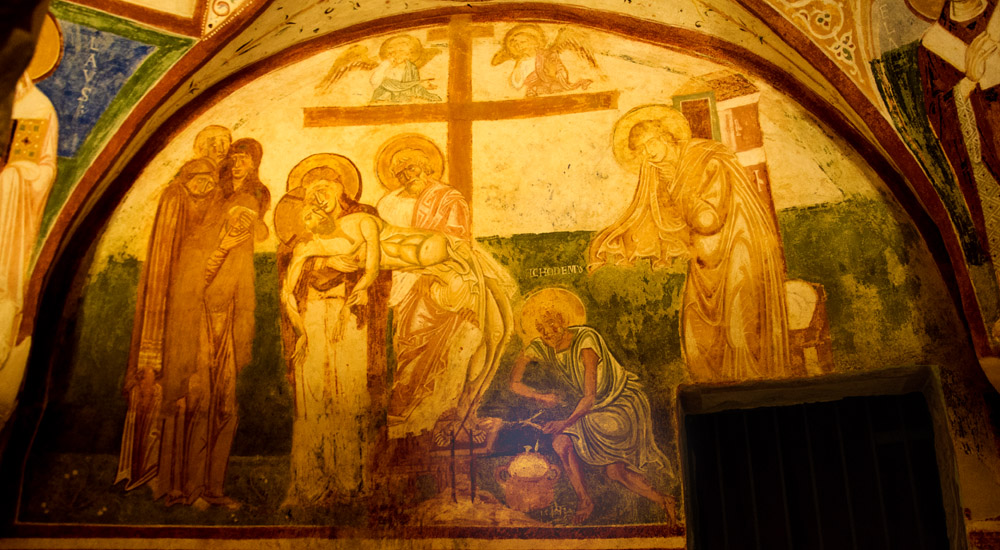The Deposition

Circa 1180
Fresco
Crypt, Aquileia Basilica
As in the four gospels, a disciple named Joseph of Arimathea takes the body of Jesus and wraps it in a linen cloth. Deposition images consistently add a sorrowing Virgin Mary to this episode, though the gospels do not mention her at this point.
Right of Joseph, a crouching man labeled NICHODEMUS is removing nails from the cross. His tool will feature consistently in future images of the "Arma Christi," the instruments associated with Christ's Passion. The nails are not mentioned in the gospels, however. In John 19:39-40 what Nicodemus does is to bring "a mixture of myrrh and aloes, about an hundred pound weight" for the burial rites. The two-handled jar at his feet may represent those spices, or it may simply be a receptacle for the nails.
The arrangement of the women into a group of three with Mary Magdalene behind is also seen in
the adjacent panel of the Crucifixion and in
a Crucifixion mosaic of about 1200 in St. Mark's, Venice. The three women in dark veils are the ones named in the various gospels: Mary the mother of James the Less; Salome, the mother of the James the Greater and John; and Mary the wife of Cleophas, sister of the Virgin Mary. The wife of Cleophas is listed in John 19:25; the other two, in Matthew 27:56 and Mark 15:40.
According to Tavano (197), opinions range widely as to when in the 12th century the crypt frescos should be dated, but most agree on a date around 1180.
View this image in full resolution.
Read more about images of The Deposition.
Photographed at the basilica by Richard Stracke, shared under Attribution-NonCommercial-ShareAlike license.